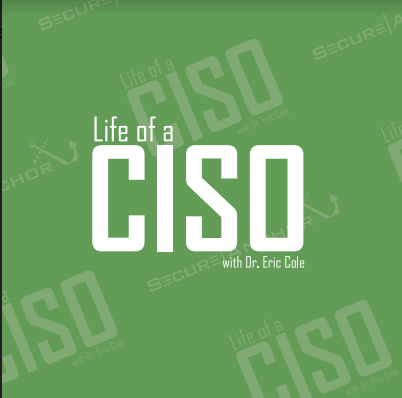Introduction
In patent cases, the damages expert witness must undertake apportionment of damages when the technology does not make up the whole of the accused product. When products have multiple components and some components are patented while some ar e not, apportionment is required. The patent expert witness will be tasked with apportioning damages between the patented and unpatented features. Courts have noted that this process “may involve some degree of approximation and uncertainty.” Appointment is just one step in the process; however, as then a secondary analysis must be conducted to determine the actual value of the patented component. The second step is often the responsibility of an economist. Furthermore, these methodologies can, and often are, challenged by the opposing party in the form of a Daubert Motion to Exclude, which seeks to prevent an expert from testifying at trial.
If you are looking for an expert witness to help in your intellectual property or patent litigation case, get in touch with Dr. Cole today.
Federal Rules of Evidence and Daubert
In Daubert, the Supreme Court set out the requirements for admissibility of expert testimony. The Supreme Court stated that the trial judge plays a “gatekeeping role,” which “entails a preliminary assessment of whether the reasoning or methodology underlying the testimony is scientifically valid and of whether that reasoning or methodology properly can be applied to the facts in issue.” The Court emphasized that the focus “must be solely on principles and methodology, not on the conclusions that they generate.” This admissibility assessment, while a flexible one, may consider the following factors:
(1) whether the methodology is scientific knowledge that will assist the trier of fact;
(2) whether the methodology has been tested;
(3) whether the methodology has been published in peer-reviewed journals;
(4) whether there is a known, potential rate of error; and
(5) whether the methodology is generally accepted.
The admissibility of expert evidence is also governed by Rules 702 and 703 of the Federal Rules of Evidence. Rule 702 was amended in response to Daubert and cases applying it, including Kumho Tire. Rule 702 states:
A witness who is qualified as an expert by knowledge, skill, experience, training, or education may testify in the form of an opinion or otherwise if:
(a) the expert’s scientific, technical, or other specialized knowledge will help the trier of fact to understand the evidence or to determine a fact in issue;
(b) the testimony is based on sufficient facts or data;
(c) the testimony is the product of reliable principles and methods; and
(d) the expert has reliably applied the principles and methods to the facts of the case.
Apportionment
Apportionment is a long-standing foundational component of determining damages. In Garretson, the Supreme Court affirmed a special master’s report that the patentee had submitted no proof of its damages because it failed to apportion to the value of the patented feature. “Likewise today, given the great financial incentive parties have to exploit the inherent imprecision in patent valuation, courts must be proactive to ensure that the testimony presented—using whatever methodology—is sufficiently reliable to support a damages award.” “The essential requirement” for reliability under Daubert “is that the ultimate reasonable royalty award must be based on the incremental value that the patented invention adds to the end product.”
From Finjan and its predecessor cases we learned that when the patented features do not drive demand for the entire product the reasonable royalty must be limited to the smallest saleable practicing unit. This is designed to prohibit the patent holder from obtaining a royalty on the unpatented parts of the product.
While the above guidance sounds straightforward its practical application is anything but simple.
Apportionments are Based on Experience
Given how complex technologies can be, it is important for a patent damages expert witness to have specific experience with the patented components and non-patented components present in what is being analyzed. Often, there will be challenges to these types of methodologies because this is not an exact science. Court will evaluate all of the Daubert factors and FRE 702 to determine whether the methodology is sound and should be presented to the jury, including an expert’s experience.
Example: iPhone Components
To illustrate the principle of apportionment, let’s take a look at an iPhone. In order to determine the value of a critical foundational component of the iPhone, Apple’s secure boot chain and recovery, a patent damages expert witness would need to “breakdown” the various components on an iPhone to determine the incremental value the patented invention component adds to the end product. This type of analysis would need to be performed by an apportionment expert witness with extensive experience in the areas of technology components, information technology, and systems security, as a baseline.
Below is a brief summary of a decision tree analysis and methodology that could be used to determine the apportionment of damages in this case.
Analysis #1 – Overall Components
One could argue that the foundational components make up 70% of the iPhone and 30% for the application components because the foundational components include the significant components of operating system with the low-level software that runs under the iOS, the user interface, and hardware.
Analysis # 2 – Core Components
Further, the foundational components of the iPhone could be divided into three main components: operating system, user interface, and hardware. Because the hardware is a key component of the device, it makes up 45% of the foundational components. As the operating system (which runs the phone) is more important than the user interface one could allocate 33% for the operating system and 22% for the user interface.
Analysis # 3 – Operating System
The operating system (33% of the value of the foundational components) can be further divided into two main components: Kernel and Operating System (OS). Because the kernel is the “brains” of the operating system, providing the fundamental authority and foundation of the operating system, it is more important than the other components of the operating system, and therefore it makes up 55% of the total value of the operating system. The other OS components have a 45% value allocation.
Analysis # 4 – Kernel
Likewise, the kernel can be divided into two main components: system process and system. The boot process is the key component of the kernel and represents over half of the overall functionality. Therefore, the boot process makes up 80% of the value of the kernel and the system components make up 20% of the value of the kernel.
Analysis # 5 – System Process
The system process can be divided into three main components: secure code, recovery, and initialization. Based on the importance of the secure code chain in Apple’s accused products and the fact that Apple specifically emphasized this component as a key component in the accused products, it represents a significant portion of the overall boot process. Accordingly, the secure code represents 45% of the value of the overall boot process. The remaining 55% allocation of the boot process is divided into 30% being allocated to startup and 25% initialization. While the initialization functionality is not used all of the time, it is always available. It is a critical component and allows users to recover software components used during the boot process, including the kernel, without having to physically go to the store, mail the device away for repair, or purchase a new device. Until a device in Recovery or DFU Mode is restored, it is unusable. Due to its lower utilization, and its importance to customer satisfaction it represents 20% of the value of the boot process which is less than the allocation for the remaining startup components. Thus, the overall allocation is 45% for Secure Code, 30% for Recovery, and 25% for the start up.
Final Calculation Based on the Foregoing Percentage Allocations
Based on the above, the value of the infringing technology to the iPhone is: .70 × .33 × .55 × .80 (.45+.30) = .076 or 7.623%.
This example is detailed in the figure below.
Conclusion
As noted above, the law which patent damages expert are to apply in these apportionment cases is expressed in the case law. The application of the law to the multi-component products requires a detailed breakdown to the smallest saleable practicing units of the product, an analysis of the significance of each unit, and an allocation of its value.
About the Author
Dr. Eric Cole is an experienced expert witness with extensive experience in IP litigation, including the apportionment of damages. He has a Doctorate in Network Security from Pace University, a Master of Computer Science from New York Institute of Technology, and a Bachelor of Science from New York Institute of Technology. He is the president of Secure Anchor (www.secure-anchor.com) and can be reached at [email protected] or 703-675-2055.



